





No matter where you live, your garden will benefit year-round from properly applied mulch: a layer of organic or inorganic material spread evenly on the surface of the soil. Today's gardeners have a wide variety of mulches from which to choose, but deciding which type to use takes a little research.
(Editor's Note: This article was originally published on April 7, 2008. Your questions and comments are welcome, but please be aware that authors of previously published articles may not be able to promptly respond to new questions or comments.)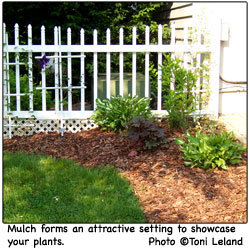 More Than Just Pretty
More Than Just Pretty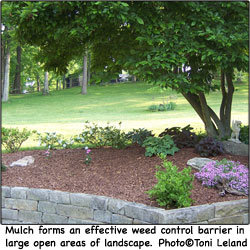
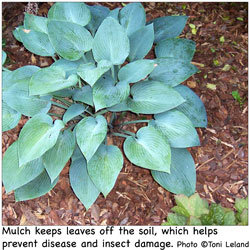 What Kind Should You Use?
What Kind Should You Use?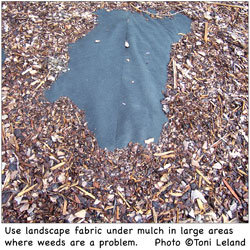
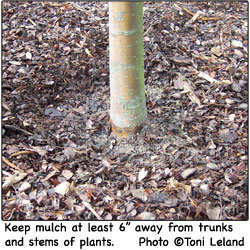 How Much is Enough?
How Much is Enough?
The recommended depth for most mulches is 2 to 2-1/2 inches; this application will address the primary objectives of weed control, water retention, and temperature stabilization. Mulches with large pieces, such as giant nuggets, will not cover as much area, due to their bulk. These mulch products are more suitable for decorative use, and should be used in conjunction with underlying landscape fabric.
The biggest mistake most homeowners make is applying mulch anywhere from 3 to 6 inches or more. This practice can lead to serious conditions for many landscape plants. A heavy layer of 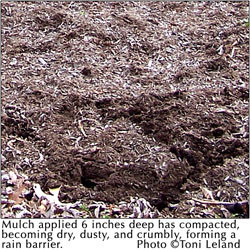 mulch drastically reduces the soil's ability to dry out, leading to soggy, water-logged soil around the roots of plants and shrubs. This condition is extremely damaging to azaleas, rhododendrons, most conifers, all taxus or yew, and many perennials.
mulch drastically reduces the soil's ability to dry out, leading to soggy, water-logged soil around the roots of plants and shrubs. This condition is extremely damaging to azaleas, rhododendrons, most conifers, all taxus or yew, and many perennials.
Mulch piled up against a stem or trunk results in constantly wet bark--perfect conditions for disease development. Additionally, rodents may nest in this thick mulch and, during winter months when food is scarce, will feed on the softened wood.
Purchasing the correct amount of mulch for your situation will save you time and money. Garden centers stock mulch in bags containing enough material to cover 2 cubic feet or 3 cubic feet. To determine what coverage you'll need, multiply the width of your space by the length; this will give you the number of square feet to be covered.
Timing is Everything Mulch can be your best helper in the garden if you use the right material and follow accepted guidelines for use.
Depending on where you live, when you spread the mulch determines the benefits. When the soil has warmed and begun to dry, it's time to plan how much you'll need. Don't mulch too early or the material will keep the soil from drying out. Plants begin root growth as sufficient oxygen becomes available and the soil temperature warms reasonably in the root area. If you live in a region where the temperatures stay cold, or the rainfall is heavy in early spring, put off mulching until May or June.
In areas where winter comes long and hard, apply a second application of mulch in the autumn, especially on new plants with shallow roots: shrubs and evergreens, herbaceous perennials, or strawberries. Water established plants thoroughly in late fall, then apply mulch. To reduce heaving on new or small plants, apply mulch immediately following the first hint of frost on the ground.
Copyright © www.100flowers.win Botanic Garden All Rights Reserved